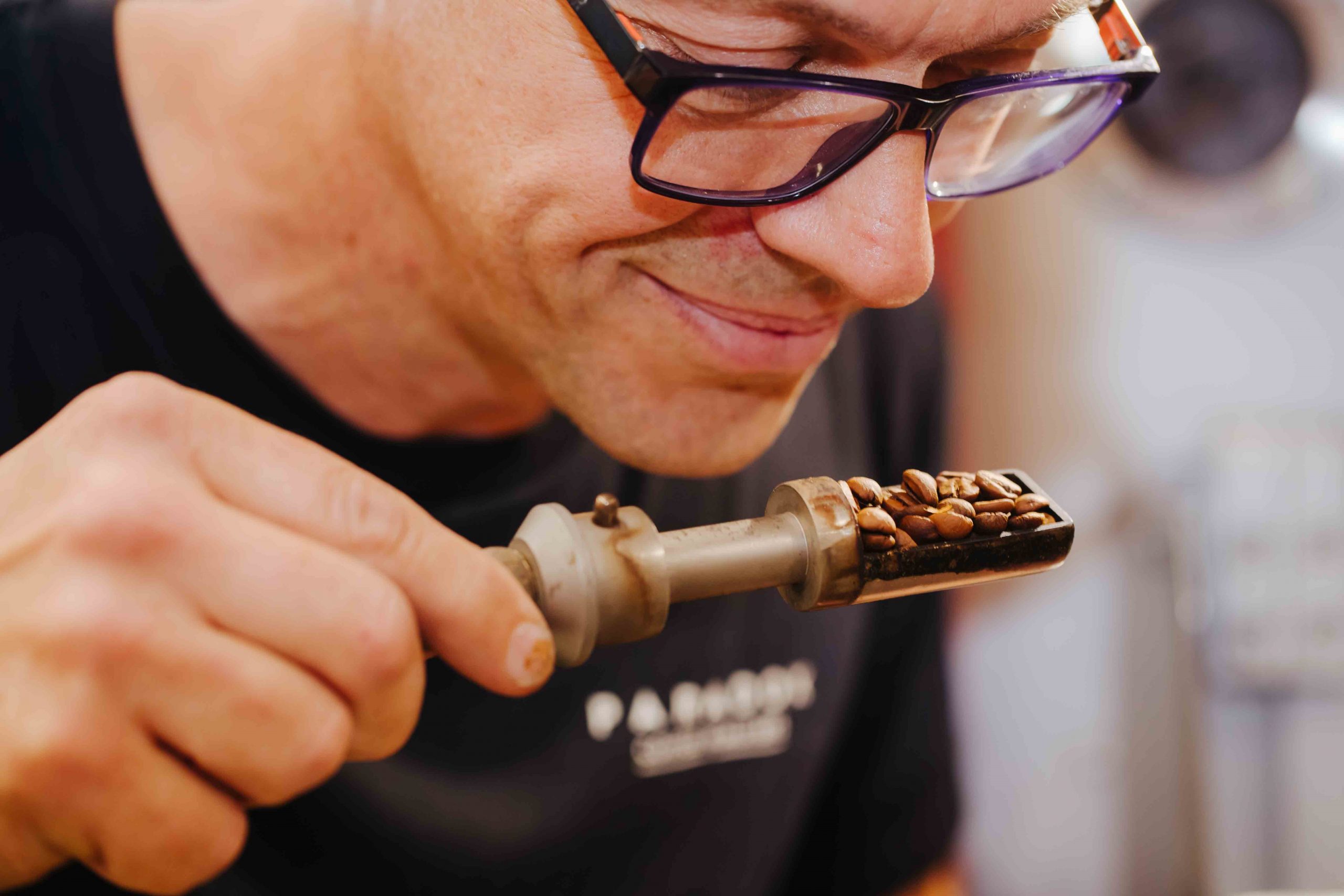Roast Profiling
by Paul Golding, Paradox Head Roaster
 Every roaster wants to get the best from every coffee they put in the drum. But best for whom? For what brew method? Max acidity or a more balanced cup? There’s no right answer.
Every roaster wants to get the best from every coffee they put in the drum. But best for whom? For what brew method? Max acidity or a more balanced cup? There’s no right answer.
When confronted with a new coffee, I start at the end – the cup. Generally, I prefer naturals as pour-overs and washed coffee as espresso or Americano. I don’t love the thought of drinking a single origin in milk but if forced to go there, I’ll factor that in too. These are, of course, not hard rules – I have no problem roasting a natural to a light espresso degree or a brilliant washed/honey to a filter roast.
Let’s use an example. I’ve purchased a small quantity of high-grade natural coffee from Colombia. It’s expensive, having been laboriously hand produced, and I don’t have much of it because there wasn’t a lot available to buy, plus it’s expensive. So I can’t run too many trial roasts to get things right, and since it’s a natural process, and a very good one, I’m likely to consider it a filter coffee.

Being a black coffee devotee, as most roasters are, I value acidity. But being an older roaster, I also value balance over a palate stripping citric attack, with rich fruit flavours and residual sugars to build up sweetness and body. My choice would be to showcase the rich fruit and sugars, while preserving as much of the acidity as possible. This is an important decision, as it influences my choice of roast curve. I will use an abbreviated “S” curve rather than the very popular “parabolic” curve featuring the constantly reducing rate of rise (ROR) immortalised by Scott Rao. My reasoning? I believe the parabolic curve favours development of acidity and crisp, delicate flavours, over body, sugary fruit and balance.
The last factor I consider is the coffee itself, physically. Are the beans large or small? I consider anything screen 17 and up large; less than 17 is small (in other words, if the bean is bigger than 7mm end to end, it’s a big one!). Colombia Caturra varieties tend to run large. My moisture meter tells me that the moisture is 12.1% and density is 980g/L. (If you don’t have a moisture meter, these stats should be available from the coffee seller.) So my beans are big, dense and reasonably high in moisture content.
All this helps me shape a preliminary roast curve. I will use the “S” shape, with the flat base of the S mildly extended to allow for drying time and full heat penetration. The small extension of the base of the S means I will possibly lose some acidity, and delicate flavours. I balance this against the strong chance of winding up with an unevenly roasted coffee resulting from too much heat too early, forcing the exterior of the beans to roast ahead of the interior. The faster ROR will come a little later, continuing through the mid phase of the roast, before a gentle and short taper to form the top of the S. I won’t taper too much as I don’t want to caramelise the sugars, and don’t wish to bake out any acidity, which I have not maximised in the first place.
For me, development of a filter roast comes around 40-45 seconds into first crack, depending on the coffee in question. A bit less for washed coffees, perhaps. Once the beans turn smooth and fat I want them in the tray cooling off.
So that’s the thought process; end use, desired characteristics and the roast curve best suited to extract them, with the exact shape of the curve influenced by the size, density and moisture of the beans.
And of course, the final element: taste the coffee, look for imperfections and decide if you could repair them by altering your roast approach. As with most things in life, avoid doubling down on a single idea; be open to altering your technique with the needs of the coffee, and your consumers.
Each roast is an expression of that roasters’ experience and preferences, which is part of the beauty of coffee as a people’s product. The green bean is an expression of the grower, the roast an expression of the roaster, the final brew is an expression of the brewer – a truly egalitarian product where everyone gets to have their say.
from Paradox http://bit.ly/34POKM2
via IFTTT
